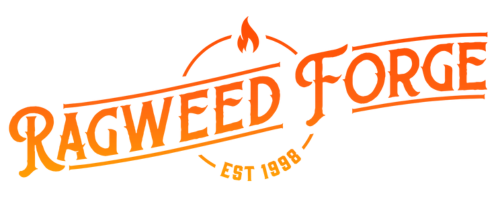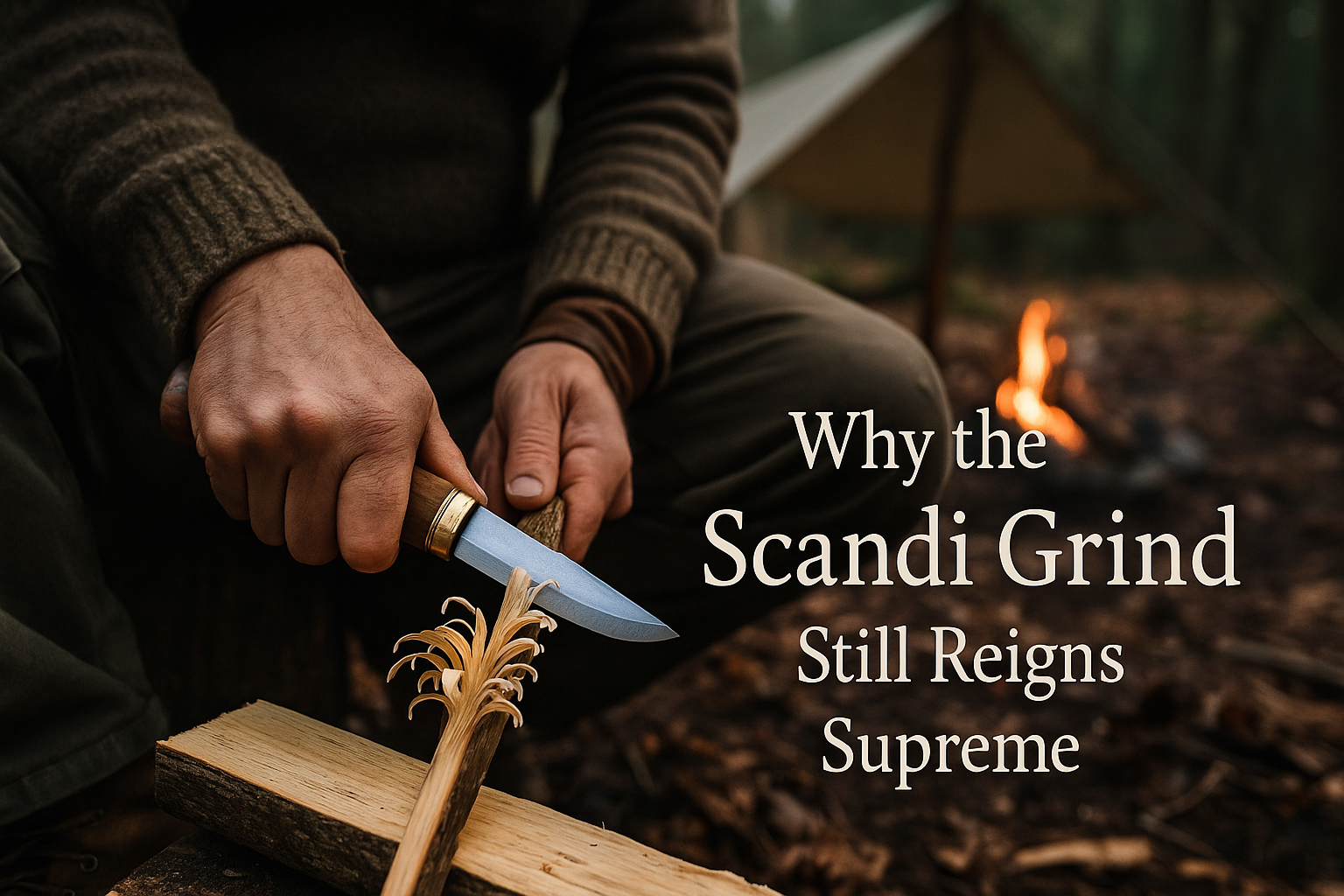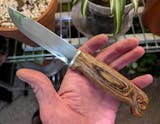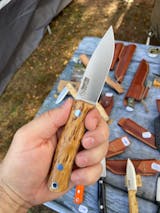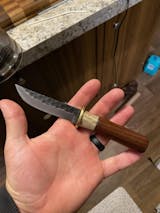Knife Grind Guide: Why the Scandi Grind Still Reigns Supreme
As a seasoned outdoorsman and gear expert, I’ve tested my fair share of knife grinds—Scandinavian, flat, hollow, convex, sabre, and even chisel. But after years in the bush, I keep coming back to Scandi grind blades. They carve cleanly, sharpen easily, and feel right at home in your hands. In this deep-dive, we’ll explore every grind type, spotlight the Scandi grind, and show you top-tier knives stocked at Ragweed Forge that prove its superiority.
What Is a Knife Grind?
A “grind” refers to how the blade tapers to its edge—the shape from the spine down to the cutting edge. Think of it as the knife’s personality: how it bites, how it holds an edge, and how it scraps bark or whittles feather sticks.
Common Grinds at a Glance
-
Scandi Grind – Single long bevel all the way to the edge. Unmatched in woodwork precision and field sharpening.
-
Flat Grind – Two straight lines from spine to edge. Versatile, but less forgiving than Scandi.
-
Hollow Grind – Concave bevel creating a super-thin edge. Great for slicing, but fragile outdoors.
-
Convex Grind – Bulged curve from spine to edge. Robust and durable, but trickier to sharpen in the field.
-
Sabre Grind – Flat near spine, deep thinning near the edge. Good for toughness; less precise than Scandi.
-
Chisel Grind (single-side) – Sharp on one side, flat on the other. Excellent for woodworking but asymmetrical.
Each has its zone—kitchen, bushcraft, or carving—but outdoors, my bets are always on one.
Why the Scandi Grind Excels
1. Effortless Sharpening in the Field
Sharpening a Scandi grind is as simple as dragging a whetstone along the long bevel—no need for guided rods or buffing wheels. You press, swipe, flip, repeat. Done. No guesswork.
2. Precision Woodworking
The Scandi bevel stops abruptly at the edge, letting you control cut depth without the blade digging in too far. That crisp stop is why you carve perfect feather sticks or notch a tent peg with ease.
3. Balanced Toughness
Unlike hollow grinds, it won’t chip easily, and while convex blades are rock-solid, Scandi blades balance edge retention and reparability better for camping use.
4. Heritage That Works
This grind was developed by Scandinavian woods-folk centuries ago—forged to prep kindling, build shelters, trap, and survive. It’s literally tried-and-tested by nature.
Who Should Choose a Scandi Grind?
-
Bushcrafters & Backcountry Campers – Need a reliable tool that’s easy to sharpen anywhere.
-
Knife Carvers & Woodworkers – Appreciate the edge control for fine details.
-
Outdoor Beginners – Don’t need complex maintenance tools or sharpening techniques.
-
Survivalists – Want a rugged, repairable blade over sleek, fragile designs.
“I sharpen my Scandi grind on a 220-grit stone at basecamp, spend half a minute per side, and I’m back at work—it’s that simple.”
—Ryan, 10-year bushcraft instructor
Sharpening & Maintenance Tips for Scandi Blades
-
Use a natural or synthetic whetstone (1200–4000 grit). Coarser grits rebuild the edge, finer ones hone it.
-
Lay the bevel flat, apply moderate pressure, and stroke toward the edge.
-
Keep a leather strop on hand—a minute stropping after sharpening keeps the edge keen.
-
Hone, don’t reshape—unless you’ve damaged the edge, you’re simply realigning the bevel.
-
Store dry and apply light oil before long-term storage to prevent corrosion—especially on carbon steel blades.
Popular Scandi Grind Picks from Ragweed Forge
Here are some standout Scandi grind knives currently available at Ragweed Forge:
-
Helle Temagami 14C28N Stainless (New) – Mid‑size laminated steel and leather sheath. Ideal for carving and skinning.
-
Mora Kansbol Outdoor Knife – Affordable Scandi blade, squared spine for fire-starting, removable grip—perfect for bushcraft beginners.
-
Morakniv Garberg – Full‑tang, rugged build, and firesteel‑ready spine—one of the toughest camp companions.
Why These Models Stand Out
-
Trusted Brands – Helle and Morakniv are synonymous with quality and bush tradition.
-
Different Sizes – From featherweight to full-size camp knives.
-
Built for the Field – Sheaths, steels, and comfort handles ready to roll.
Linking you directly:
Comparing Scandi to Other Grinds
| Grind Type | Field Sharpening | Carving Ability | Durability | Ease of Use |
|---|---|---|---|---|
| Scandi | ★★★★★ | ★★★★★ | ★★★★☆ | ★★★★★ |
| Flat | ★★★★☆ | ★★★★☆ | ★★★★☆ | ★★★★☆ |
| Hollow | ★★☆☆☆ | ★★★★☆ | ★★☆☆☆ | ★★☆☆☆ |
| Convex | ★★☆☆☆ | ★★★☆☆ | ★★★★★ | ★★☆☆☆ |
Conclusion: Why Scandi Grind Wins
For anyone venturing into the wild, carving wood, or simplifying gear, the Scandi grind consistently delivers. It’s sharp, dependable, and intuitively simple to maintain. Sure, a convex or hollow blade has its place—but this grind brings real-world practicality back to the forefront.
👉 Explore this Roselli Scandi grind collection at Ragweed Forge and find the blade that speaks to your next adventure.
Author’s Note
I’ve carried a Scandi grind knife daily for the past eight years—through lathe cuts, lean-tos, and camp fires. It’s not simply gear; it's the echo of those Scandinavian woodsmen who first carved a living from the land. When a knife feels like an extension of your purpose, that’s more than a tool—that's trust.
